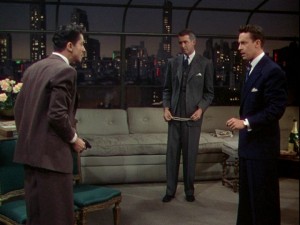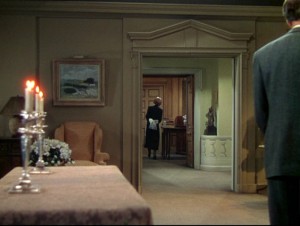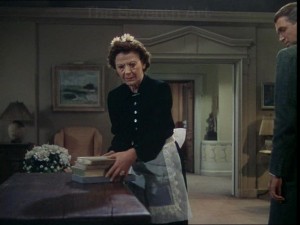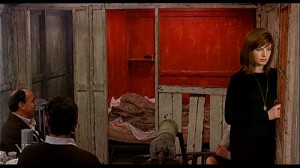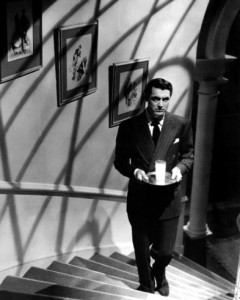From Sight and Sound (Summer 1973). – J.R.
FILM AS FILM: Understanding and Judging Movies
By V.F. Perkins
PENGUIN BOOKS, 35p
Responding polemically to some of the more antiquated notions found in Rotha, Lindgren, Manvell, Arnheim and others, the title of Victor Perkins’ short and engaging book carries a sympathetic resonance. A major part of his enterprise is to clear away cobwebs from the attics of film theory and lay a few outdated texbooks to rest, and ‘Film as Film’ adequately summarizes the central thrust of his yarious charges. But as we know, theories arc usually debunked to clear the way for newer models, and as soon as Perkins’ own theory gets under way, his title begins to seem much more inclusive than anything he claims to offer in his text. Unavoidably, alternate titles come to mind: “Action as Presentation”, or, perhaps more to the point, ‘Movie as Movie’.
As Perkins indicates in his preface, ‘The examples discussed are not drawn from the (rightly or wrongly) accepted classics of Film Art nor from the fashionable “triumphs” of the past few years, but generally from films which seem to representwhat the Movies meant to their public in the cinema’s commercial heyday.’ What is meant by this is not, say, Gone with the Wind, King Kong or Casablanca, but rather the films of Preminger, Hitchcock, Minnelli, Brooks, Fuller and Nicholas Ray — in short, an abbreviated paraphrase of the pantheon that dominated the pages of Movie in the 1960s. (Eisenstein, Huston, Losey, Antonioni and Wyler also figure, but mainly as Negative Examples.)
As one of Movie’s editors, Perkins can be said to reflect its overall politique; but it would be a mistake to identify him too closely with the range of tastes that Movie has accommodated. If one looks back at a discussion of editorial differences that appeared nearly a decade ago (Movie No. 8), where the essential aspects of Perkins’ position are already quite evident, it is clear that he represents the most conservative attitude in relation to modern European cinema -– skeptical about Vivre sa Vie, silent about Bresson, contemptuous of L’Eclisse.
By and large, Perkins wants to keep his cinema relatively simple, devoid of all the self-consciousness and most of the paradoxes that are central to modernism; so that it scarcely comes as a surprise when he bypasses Godard’s alternate history in La Chinoise to describe Lumière’s and Méliès’ filmsrespectively as ‘purely reproductive’ and ‘purely imaginative’. Elsewhere we learn that ‘the director’s guiding hand is obvious only when it is too heavy’ –- a cornerstone inPerkins’ theory, and one that necessarily excludes a great deal of cinema from his canon.
Yet within the tenets of his aesthetic, Pcrkins can function impressively as a critic. In his extended treatment of the camera movements and dramatic organization of Hitchcock’s Rope, he offers what is probably the most carefully reasoned and persuasive defense of the film that anyone has attempted, arguing cogently that the camera’s mobility effectively shapes the dramatic action rather than tracing an elaborate filigree around it. Equally interesting is a challenge to the popular notion that all films exist in the present tense: ‘If we can describe the movie as existing in any tense at all, than the nearest equivalent is probably the historic present which evokes the vividness of memory or fantasy: “There I am walking along the street, and there’s this old man standing on the corner. And then he steps out into the read just as the lorry comes round…”’
Other highpoints include a comparison of color changes in sequences from Red Desert and Elmer Gantry (the latter praised in contrast to the former for its smooth integration into naturalistic conventions), a parallel comparison of lighting techniques in scenes from The Criminal and Rebel Without a Cause, and an analysis of what goes wrong in two Elia Kazan/Budd Schulberg films, On the Waterfront and A Face in the Crowd, when ‘coherent thought is sacrificed to the dynamics of narrative,’and ‘the personal story overwhelms the political morality-play.’
In other passages, some of the more abbreviated arguments appear less tenable, and contrary evidence often springs to mind. Hitchcock, we’re told, casts Cary Grant in ‘films (To Catch a Thief, North by Northwest) whose tones are predominantly light and in which Grant’s presence acts as our guarantee that all will turn out well”; but we may wonder why Perkins fails to mention Suspicion and Notorious, which tend to complicate this premise somewhat. And when Perkins insists that the story of La Notte ‘is abandoned when it has served the director’s purpose but before it has served the spectator’s requirements,’ he is describing his own requirements, certainly not those of every spectator.
Other quarrels might be raised about the treatment of style in relation to propaganda. Triumph of the Will is condemned for ‘stylistic grossness’, while 124 pages later Exodus is praised –- implicitly as something other than propaganda — for Preminger’s ‘detachment-in-involvement’. But isn’t the grossness of Riefenstahl’s film more a matter of what it leaves out about Nazism than the brilliantly measured style it employs? (It is a style, after all, that makes the Nazi mentality comprehensible, in a way that, say, Nuit et Brouillard does not). And after we acknowledge the enormous differences between the political issues involved, we might well agree that Preminger ‘divides our allegiance between several characters whose interests…are sharply contrasted,’ but only if we recognize that the viable contrasts offered in Exodus are between different forms of Zionism: the entire Arab viewpoint is more or less reduced to John Derek.
Despite such problems, Film as Film is a useful book to have around. However restrictive Perkins’ theory may seem in relation to the whole body of cinema, it is a theory worth arguing with, and one that permits some valuable critical insights.
JONATHAN ROSENBAUM


